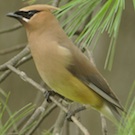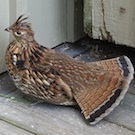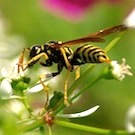Rare and Endangered Species
Prior to the construction of the reservoir, the Deep Creek watershed was a mosaic of bogs, wetlands and conifer-lined streams. Larger wetlands within this system included The Glades/Cherry Creek Bogs, Thayerville Bog (now under DCL), and Hammel Glade. Alterations in the landscape since the dam was constructed has reduced the habitat area of some species, making some of them rare, threatened or endangered.
Much of Hammel Glade is a natural area owned by the Nature Conservancy, and Lower Deep Creek Natural Area was purchased by The Nature Conservancy and transferred to the State. Both of these significant habitats are in the vicinity of Deep Creek Lake, and both support several rare, threatened and endangered species. The southern water shrew (Sorex palustris punctulatus), is a State Endangered Species found in these environments.
A wetland associated with a cove near Holy Cross Camp supports an occurrence of the State Threatened plant, Polemonium van-bruntiae or Jacob' Ladder. This occurrence is now quite isolated and its long-term viability is questionable. Other coves that are influenced by circum-neutral ground water and have not been developed too intensively may harbor small occurrences of this plant.
Paraplanaria (Planaria) dactyligera, an apparently rare epigean species of flatworm, occurs in a groundwater spring between Deep Creek Lake and Rt. 219. In Maryland, this species is found at seven locations in Garrett County and one in Prince George's County. It is reported in four other states south to Louisiana. Many springs surveyed between the disjunct localities in Maryland have failed to yield additional occurrences. Identical external morphology to a widespread and common species (Phagocata velata), in conjunction with extreme technical difficulties inherent with internal morphological examination (i.e., staining/sectioning) needed for positive species identification, have prevented the additional survey work needed to confirm the need for listing P. dactyligera as threatened or endangered in Maryland.
A species of Pygonodon, a large freshwater mussel has been documented to occur in the shallow waters of Deep Creek Lake adjacent to Deep Creek State Park. While P. grandis is the only native Pygonodon to the watershed, P. cataracta may have been introduced incidentally during fish stocking. P. grandis, limited to the Ohio/Mississippi River drainages, is potentially very rare in Maryland and a potential candidate for listing as threatened or endangered. If the species is determined to be P. cataracta, the occurrence may be worth protecting since mussels can help maintain good water quality by filtering excess nutrients.
The forest land of Deep Creek Lake State Park offers values associated with the conservation of biological diversity. In conjunction with forest land that surrounds the Park, the area represents a fairly large tract of forested habitat. This area provides a suitable habitat for several species of forest interior dwelling birds, a group of animals which are rapidly losing habitat statewide. The Park land has forests that are significantly older than the surrounding forest (part of which is managed for timber) and thereby offers significant habitats that are associated with older forests. These include a varied and complex forest canopy, more den and mast trees, and a more complex ground cover because of more coarse woody debris.
Resources:










